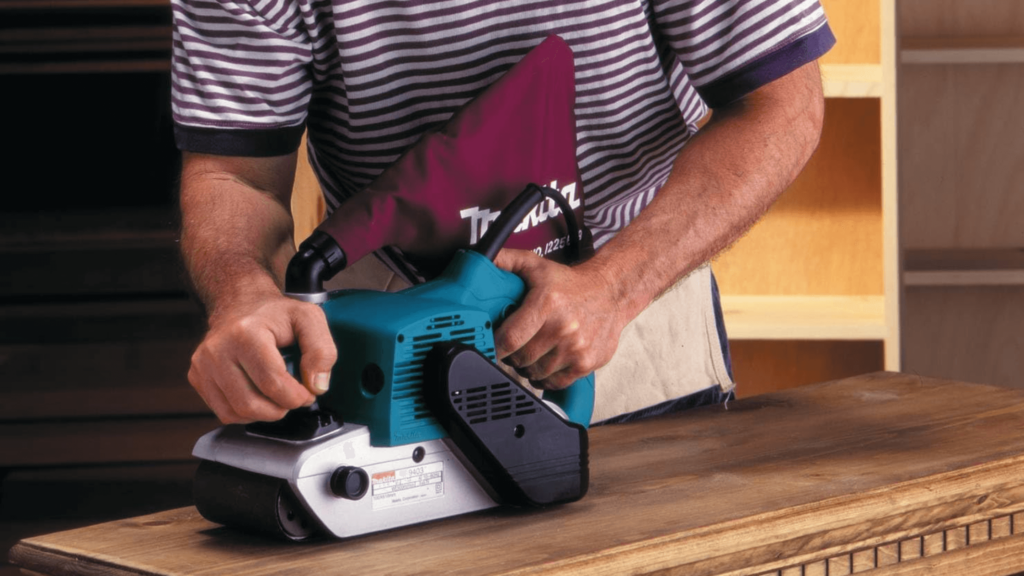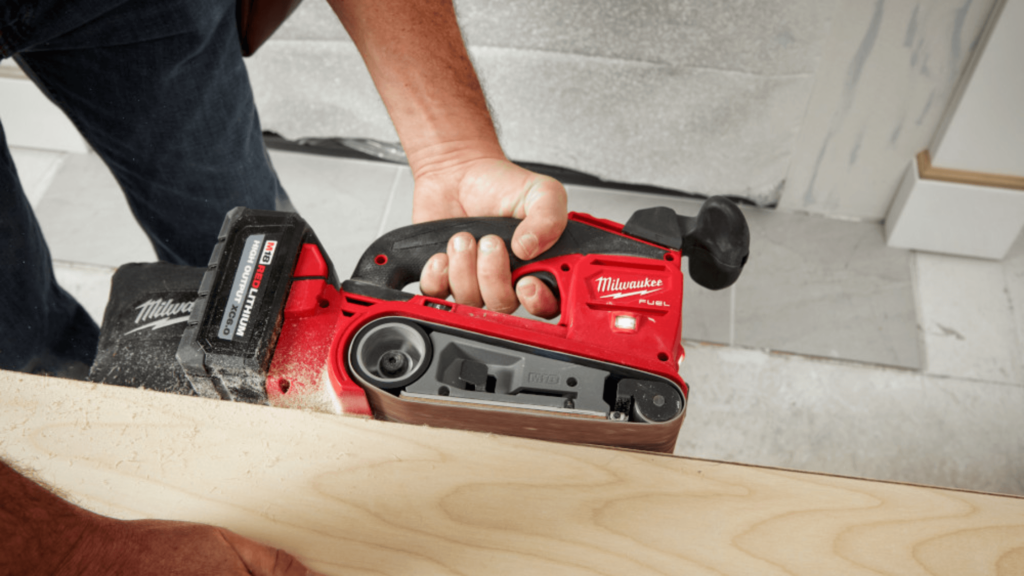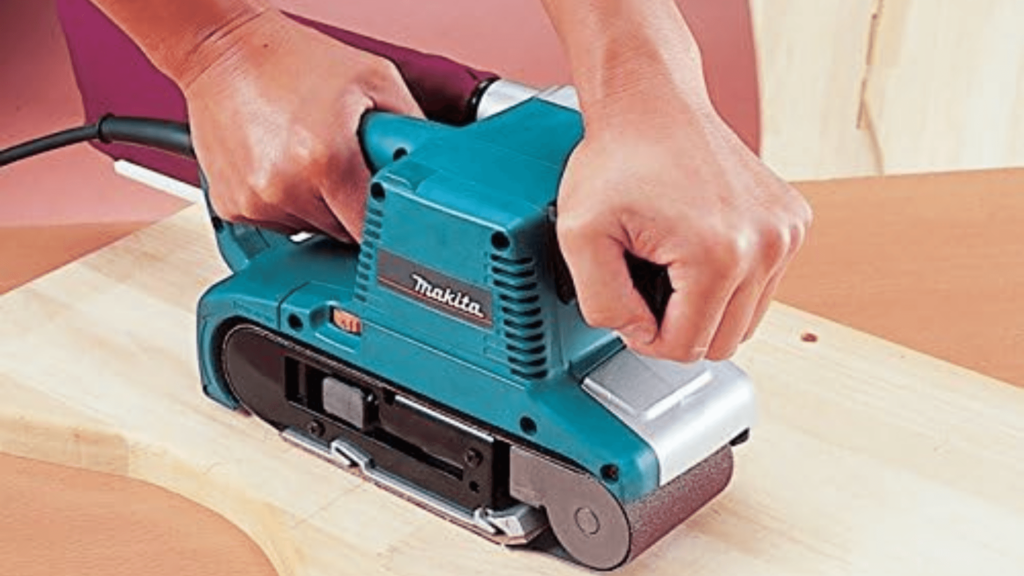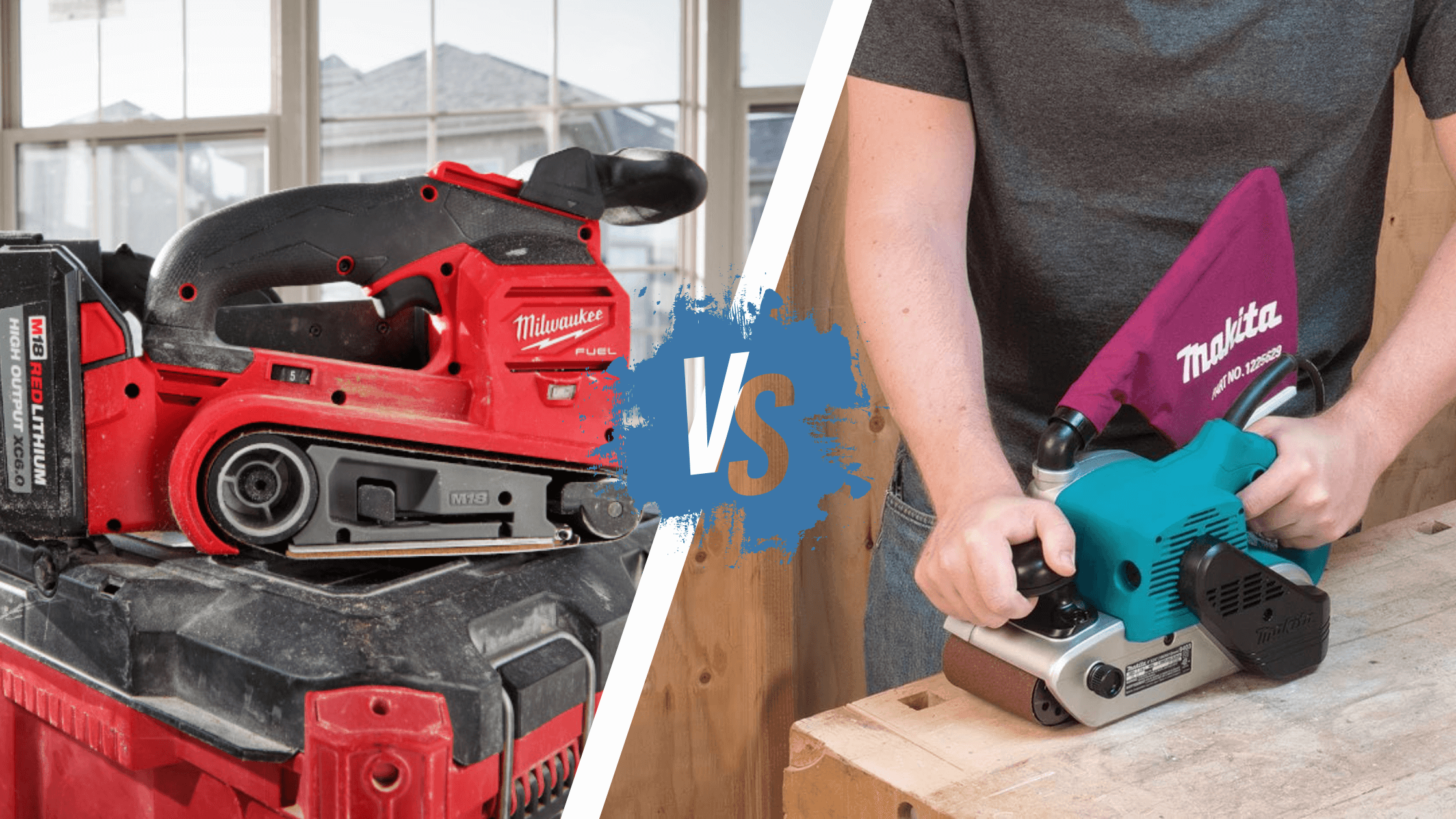When it comes to power tools, Makita and Milwaukee are two of the most respected brands in the industry. Both are known for their durable, high-performance equipment, especially belt sanders. This article will compare Makita and Milwaukee belt sanders in detail, looking at everything from selection to performance and features, ultimately deciding which brand stands out as the better choice.
Makita vs Milwaukee: A brief history
Both Makita and Milwaukee have storied histories and are critical players in the power tool market. Makita was founded in 1915 in Japan, initially as a lighting equipment and motors manufacturer. Over time, it evolved into one of the leading producers of electric power tools.
Known for innovation, Makita has consistently introduced cutting-edge tools and was the first to offer a rechargeable power tool in 1978. Today, Makita is synonymous with durability, precision, and professional-grade tools that appeal to construction professionals and DIY enthusiasts alike.
Milwaukee, founded in 1924 in Wisconsin, USA, is famous for its “job site” focus. The brand developed tools with ruggedness and performance in mind, catering to the construction industry’s needs. Over the years, Milwaukee has pioneered cordless technology, making it a major player in the cordless tool market.
Their M18™ and M12™ battery platforms are industry standards, providing consistent power for a wide range of tools. Milwaukee’s focus has been on creating tools that withstand the harshest conditions, making them a go-to for professionals on demanding job sites.
While both companies have deep roots in the industry, they take slightly different approaches to their belt sanders. Let’s explore these differences in more detail.
Makita vs. Milwaukee belt sanders

Selection
Makita offers a wider selection of corded belt sanders. Their lineup is designed for various tasks, including heavy-duty sanding and fine detailing work. Popular models like the Makita 9403 and Makita 9903 cater to users who need a combination of power and finesse. These tools are ideal for large-scale surface prep, furniture restoration, and fast material removal.
On the other hand, Milwaukee focuses on cordless power tools, and its belt sander lineup is slim but impressive. The Milwaukee M18 FUEL™ Cordless Belt Sander stands out as a powerful, portable option designed for professionals who need the flexibility to work without being tethered to a power outlet. Milwaukee’s reliance on its M18 battery system allows users to swap batteries across a wide range of tools, offering convenience and efficiency on the job site.
While Makita offers more variety and sizes in its corded belt sanders, Milwaukee’s cordless sander is a clear favorite for those who prioritize mobility and cordless convenience.
Performance
When it comes to performance, both Makita and Milwaukee deliver high-quality results, but in different ways.
Makita’s belt sanders are known for their powerful motors and smooth operation. The Makita 9403, for example, features an 11-amp motor and a wide 4-inch belt that makes quick work of sanding large surfaces. It is built for industrial-grade performance, excelling in material removal while remaining quieter than many competitors. The machine’s precise control, combined with excellent dust collection, makes it a top choice for professionals who work indoors and need to minimize cleanup.
In contrast, Milwaukee’s M18 FUEL™ Belt Sander is engineered for portability without sacrificing performance. The POWERSTATE™ Brushless Motor delivers enough power to rival corded options but with the added flexibility of cordless operation. Its REDLINK PLUS™ Intelligence ensures the tool runs efficiently, preventing overheating and overloading.
Milwaukee’s cordless sander is highly portable, making it ideal for contractors and tradespeople who need to move freely on job sites. However, the trade-off comes in battery life; while performance is impressive, the need for battery swaps during longer tasks can be a drawback.

Features/specs
Makita belt sanders are designed with the professional in mind. Models like the Makita 9403 feature an impressive range of features, including:
Makita 9403:
- Auto-tracking belt system: No need for manual adjustments to keep the belt aligned.
- Large front grip: Provides additional control for more precise sanding.
- Efficient dust collection: Integrated systems to keep the workspace clean.
- Variable speed control: Available on the Makita 9903, this feature allows users to fine-tune the sanding speed for different materials and projects.
Makita 9403 specs:
- Power source: Corded (11 Amp motor)
- Belt size: 4” x 24”
- Speed: Single speed (1,640 SFPM)
- Weight: 13 lbs
- Dust collection: Dust bag included; port for vacuum attachment
- Cord length: 16.4 ft
- Noise level: 84 dB
- Warranty: 1 year
Makita 9903 specs:
- Power source: Corded (8.8 Amp motor)
- Belt size: 3” x 21”
- Speed: Variable speed control (690 to 1,440 SFPM)
- Weight: 9.5 lbs
- Dust collection: Dust bag included; port for vacuum attachment
- Cord length: 16.4 ft
- Noise level: 85 dB
- Warranty: 1 year
Milwaukee’s M18 FUEL™ Cordless Belt Sander, on the other hand, boasts innovative features that align with their cordless philosophy:
- Cordless convenience: The biggest advantage, powered by Milwaukee’s M18 battery platform.
- Variable speed control: Allows for more flexibility when working with different materials.
- Brushless motor technology: Ensures longer motor life and more efficient operation.
- REDLINK PLUS™ Intelligence: Protects the tool from overheating and helps maximize battery life.
- Power source: M18™ REDLITHIUM™ Battery (cordless)
- Motor: POWERSTATE™ Brushless Motor
- Belt size: 3” x 18”
- Speed: Variable speed control (ranges from 700 to 1350 SFPM)
- Weight: 6.2 lbs (without battery)
- Dust collection: Integrated dust collection system with a port for a dust bag or vacuum attachment
- Run time: Approximately 20 minutes of sanding per 5.0Ah battery (depending on application)
- Warranty: 5 years (tool), 3 years (battery)
While both brands offer robust feature sets, Makita excels in traditional sanding jobs with its fine-tuned corded tools, whereas Milwaukee’s cordless sander offers unmatched mobility and innovation.
Price
Makita’s belt sanders generally fall within a mid-range price point. The Makita 9403 typically retails for around $250, making it an affordable yet high-performing option for professionals. The Makita 9903 is similarly priced, with both models offering excellent value for their features and durability.
Milwaukee’s M18 FUEL™ Cordless Belt Sander is more expensive, typically around $300 to $350. While the price might seem steep, it reflects the cordless convenience and advanced battery technology that Milwaukee is known for. However, users must factor in the cost of additional batteries and chargers if they don’t already own other M18 tools.

Reviews
User reviews highlight the strengths of both brands. Makita belt sanders, notably the 9403 and 9903, received praise for their smooth operation, reliability, and ability to handle heavy-duty sanding tasks without faltering. Many professionals appreciate the consistent power of Makita’s corded tools and that they hold up well over time, even with frequent use.
Milwaukee’s M18 FUEL™ Cordless Belt Sander also receives positive feedback, especially for its convenience and cordless freedom. Users love the ability to work without worrying about power outlets or extension cords. However, some reviews mention that the tool’s battery life may not be sufficient for extended sanding jobs, requiring extra batteries to complete larger projects.
UTHH top pick: Makita
The Makita belt sander takes the top spot after comparing the selection, performance, features, price, and user reviews. Makita offers a broader range of belt sanders that cater to different needs, and its corded tools consistently deliver high performance, reliability, and ease of use. For professionals who need a dependable tool for large-scale projects, Makita is the go-to brand.
While Milwaukee offers excellent innovation in the cordless space, its single belt sander may not provide the same level of versatility and long-term performance as Makita’s corded models. Milwaukee’s cordless sander is best suited for those who prioritize portability, but the price and battery life limitations may be a concern for some users.
In the end, Makita’s reliability, power, and range make it the better choice for most users looking for a top-quality belt sander.
Subscribe to our weekly newsletter to stay plugged into the latest news and advice on tools and equipment from Makita, Milwaukee, and other big-name manufacturers.



1 comment